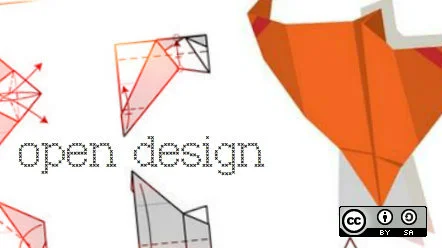The paperless utopia I imagined I would be living in by now remains a work in progress. As I've thought more about why, I've decided it's the long tail of paper that's holding me back. Sure, almost all of my communications are electronic these days, and my scanner makes quick work of almost everything that comes to me in a dead tree format.
But as I look around my home office and wonder why there are still stacks of paper here and there, I realize there are some things that just make more sense in physical form, at least for part of their existence. I see calendars and brochures and instruction guides. I see posters from events, and even a piece of origami. While you could argue that some of these items could be made obsolete by their digital equivalents, they haven't been, and digitizing them myself is more work than the payoff would justify.
There's another part of the equation, too. Just because I may prefer a digital experience for consuming information, it doesn't mean everyone I interact with shares that preference. Considering the needs of your audience is critical to anyone with a message to convey, and in a world crowded with so many distractions competing to receive your readers' attention, you have an obligation to meet them more than halfway if you expect your message to be heard.
So, despite the many options for distributing your message electronically, printed collateral isn't going away anytime soon. Whether you're producing a button or a pamphlet or a bumper sticker, you need an effective way to lay out the design and blend your text with your images and other brand assets.
The world of proprietary software has brought us many tools for designing layouts, including QuarkXpress and Adobe InDesign among the better known. And Microsoft Publisher still may take the prize (at least for small businesses and individuals) as one of the most-used publishing platforms, owing to its low cost and ease of use to people already familiar with the Microsoft Office suite. Many a church bulletin and nonprofit fundraising letter have been put together in Publisher (or even Word).
But you don't need a proprietary tool to design a great layout. Whether you're using Linux or still stuck on Windows or Mac OS X, there are great free and open source options. Let's look at some of the open source alternatives to Microsoft Publisher for designing your next print layout.
Scribus
Scribus is the gold standard when it comes to open source desktop publishing. With over a decade of active development, you'll find pretty much all the features a basic user would expect inside. It can import a wide variety of formats (including Microsoft Publisher files), and a user-friendly interface makes for a non-threatening learning curve. The large user community also means that there are many great resources out there for those who need additional help, from books to forums to downloadable templates, to fit almost any need.
LibreOffice
Don't want to learn a new program? Both LibreOffice and OpenOffice both provide excellent design capabilities across several of components. While Writer can provide basic layouts, Draw expands the capability even further and is probably the best choice for semi-complex layouts like newsletters or brochures. I even managed to use Impress to produce a scientific poster for a project in grad school, using a template originally designed for PowerPoint that imported just fine.
Markup
The third option, and, hear me out, is to use a markup language. It's not always WYSIWYG, but if you're already familiar with a markup language, why not make use of that skill? And I don't just mean Docbook or LaTeX—for many projects, HTML and CSS or even Markdown works just fine and they let you use your existing tools, whether a text editor or a more full-featured tool just for working with web pages, and you can use the pandoc converter to generate a print-ready format (most likely, a PDF). Maybe it's an unexpected alternative to a professional design application, but it works fine for many purposes.
Alternatively, if you're a LaTeX user, you can try the LyX document processing tool. Lyx is a graphical interface for writing LaTeX, with features to help track and manage style directives and packages.
But why use a markup language for print design? A few reasons. One, it's plain text, so you can version it in Git to track all of your changes and use many different tools on the files directly, even from the command line. Two, it can reduce your production time if you're creating the same documents for web and print. Three, and this is what I like most about markup languages, they're human-readable. I get what I expect when I write code.
Bonus: Inkscape
While Inkscape isn't by any means a graphics layout application, vector illustration applications have been used for layout by many a professional artist. The peculiar advantage that Inkscape has over the others is that, behind the scenes, it works in XML (the SVG format). It also has the flexibility to keep images and other binary assets external of the design file. This means it can easily be version controlled with Git (or similar), unlike other GUI design applications.
Do you still produce layouts for printed collateral? What program do you use? Is it one from this list, or do you use something else, perhaps a tool more optimized for graphics editing like GIMP, or another choice entirely? Let us know in the comments below.
Editor's note: This article was originally published in July 2016 and has been updated.








18 Comments